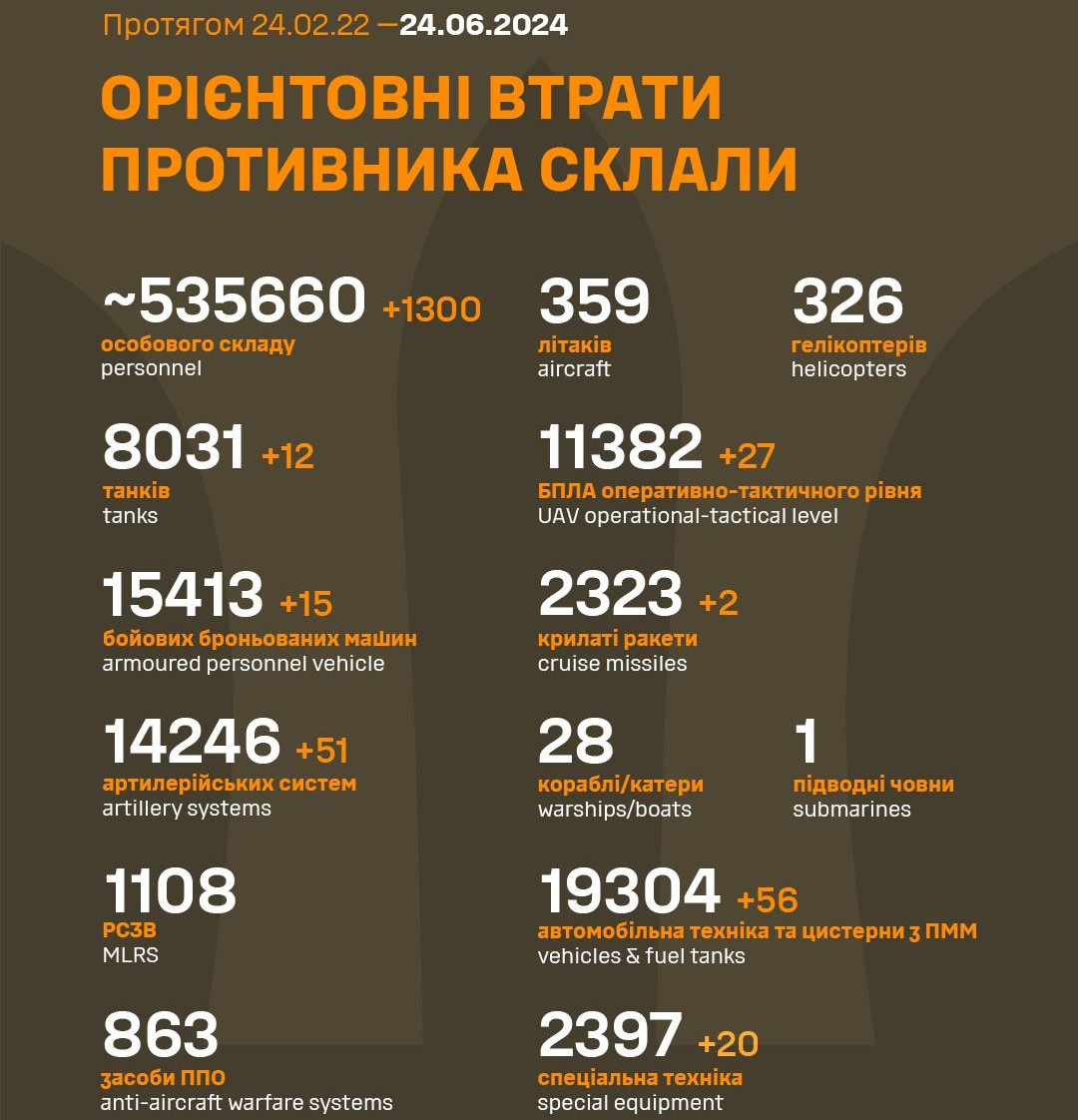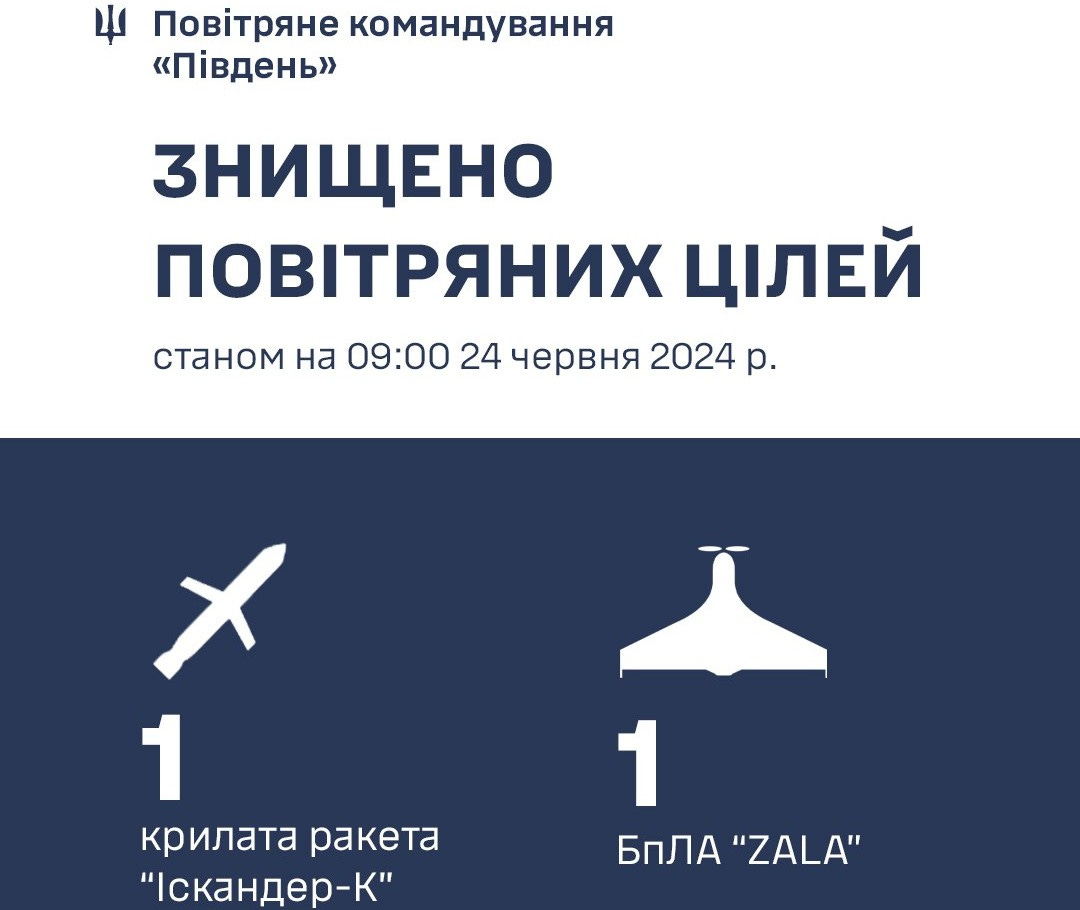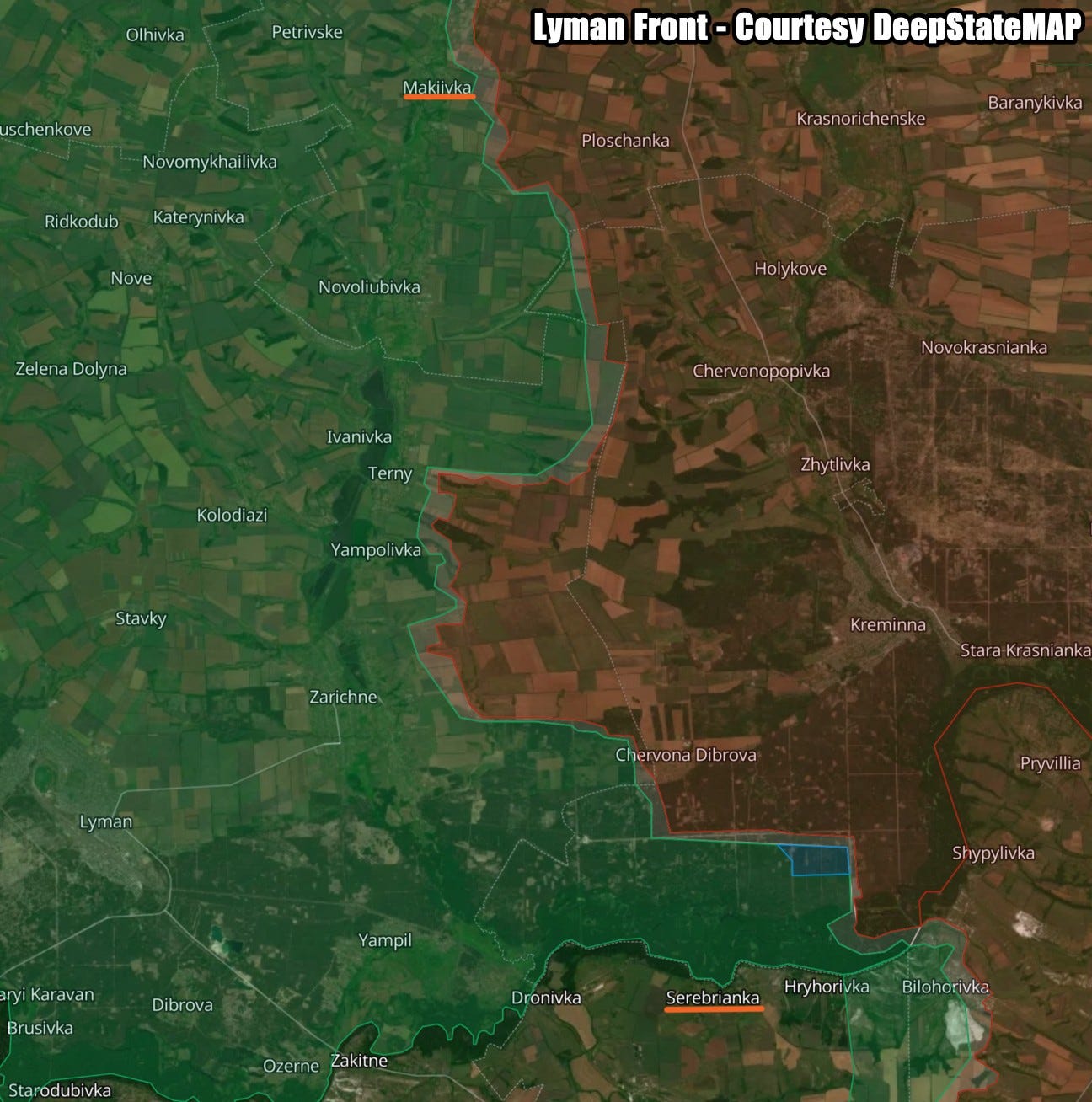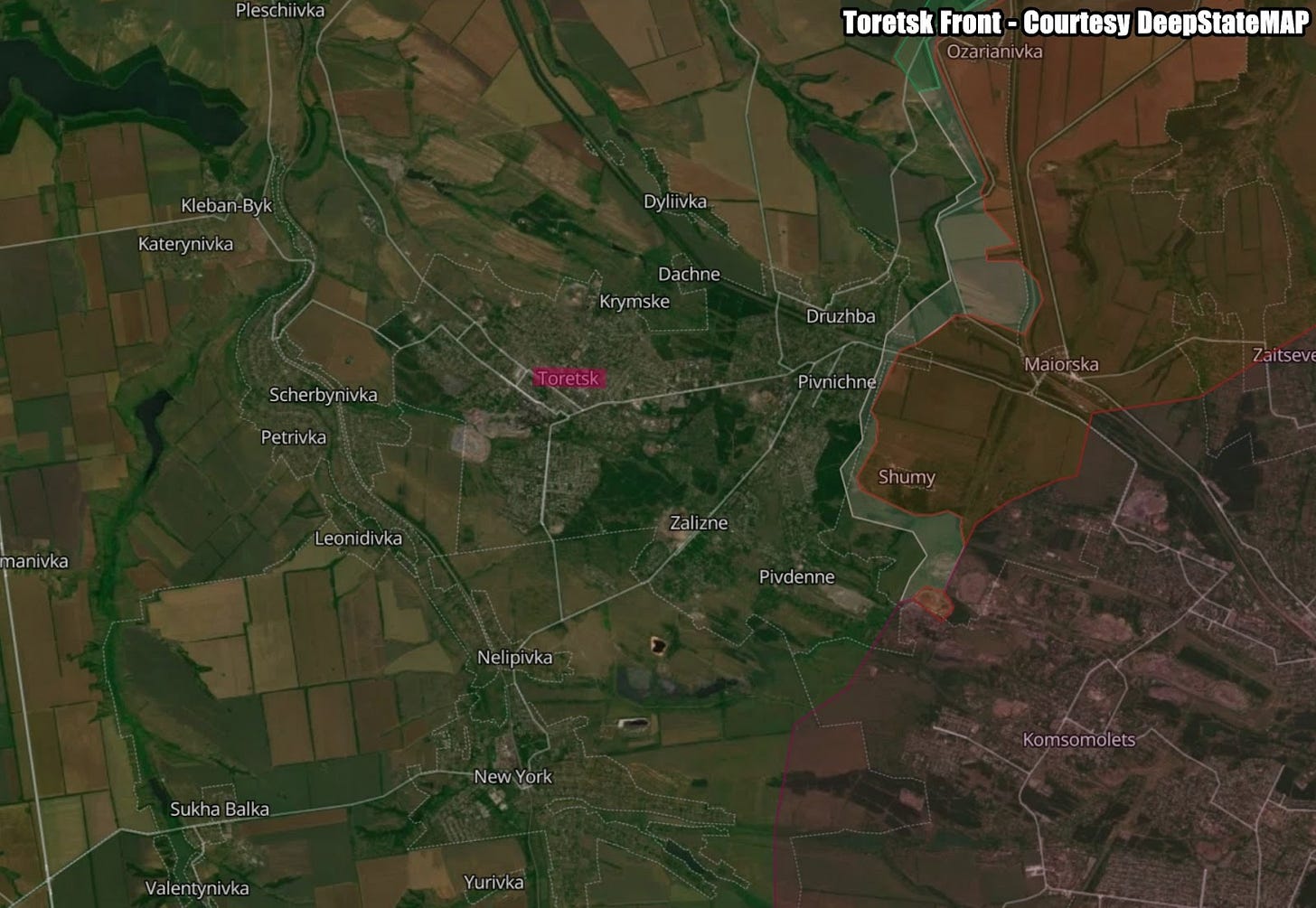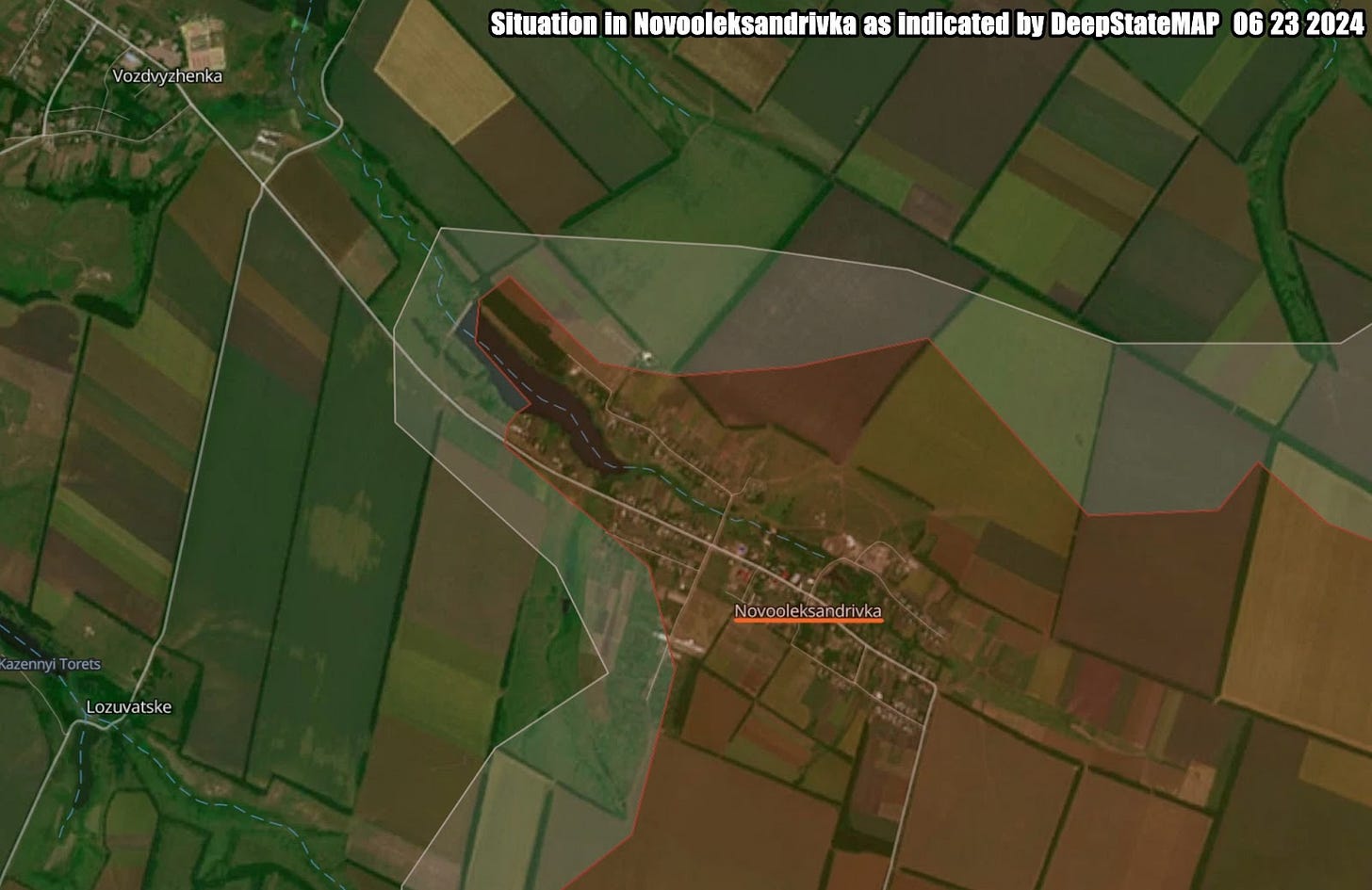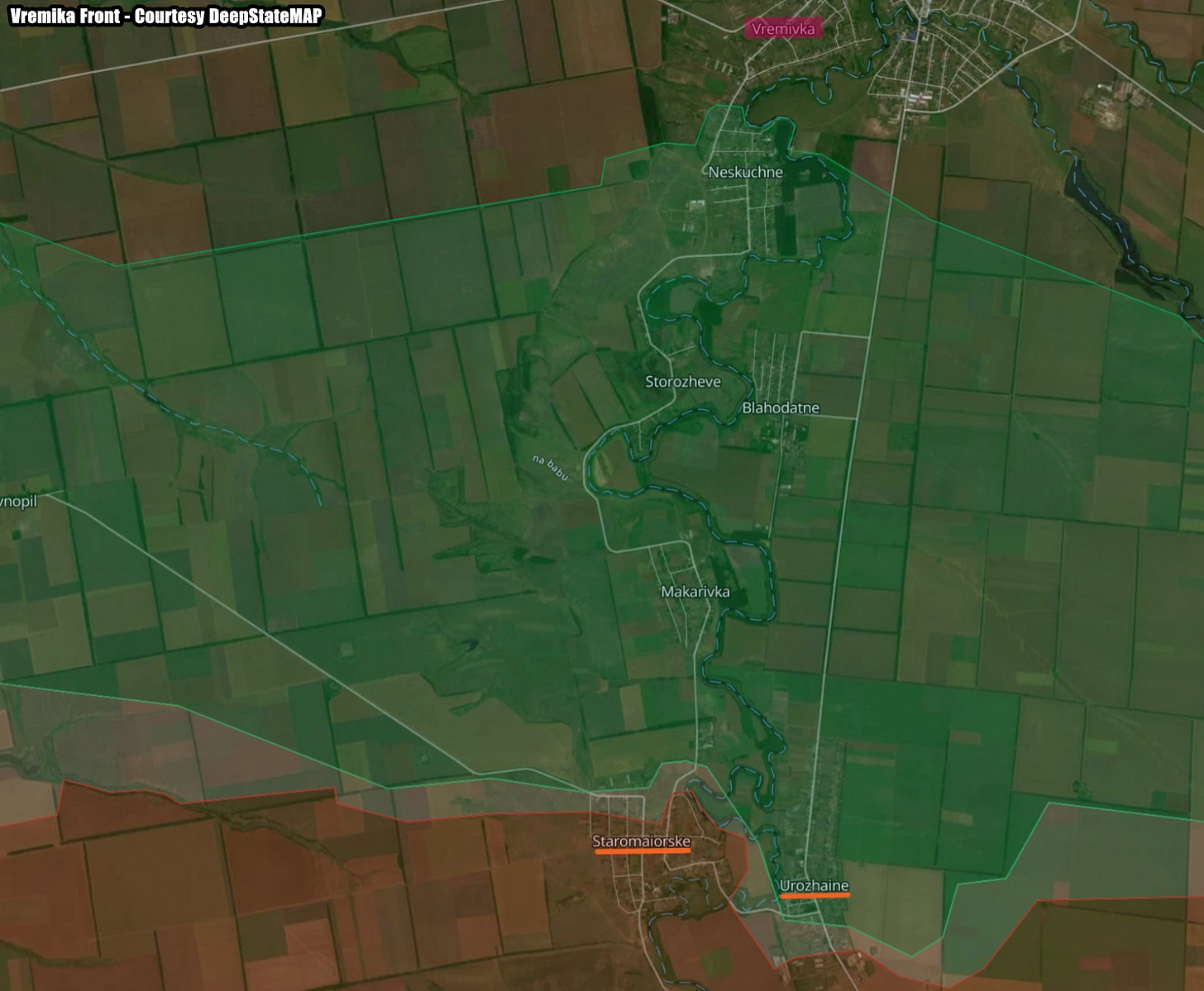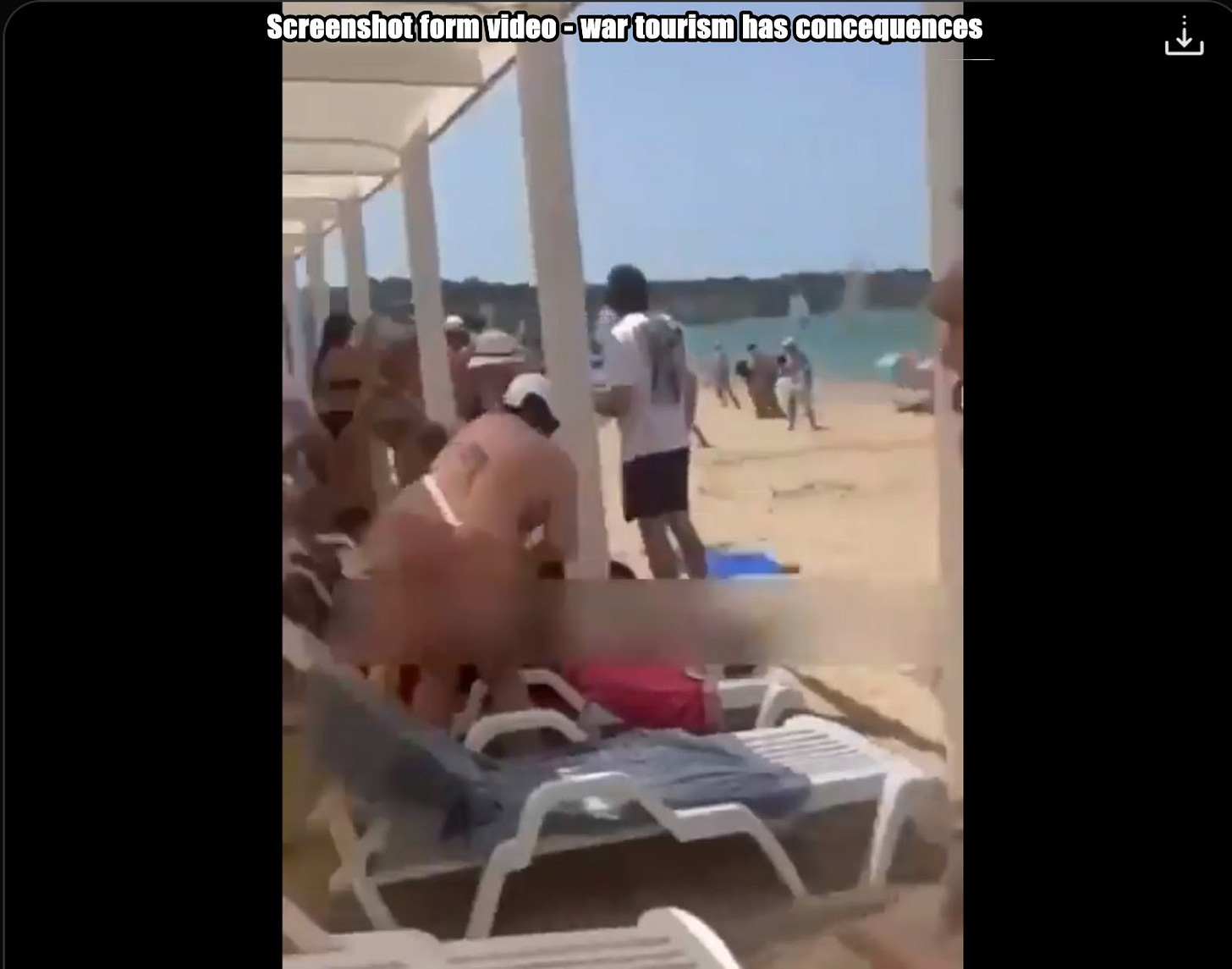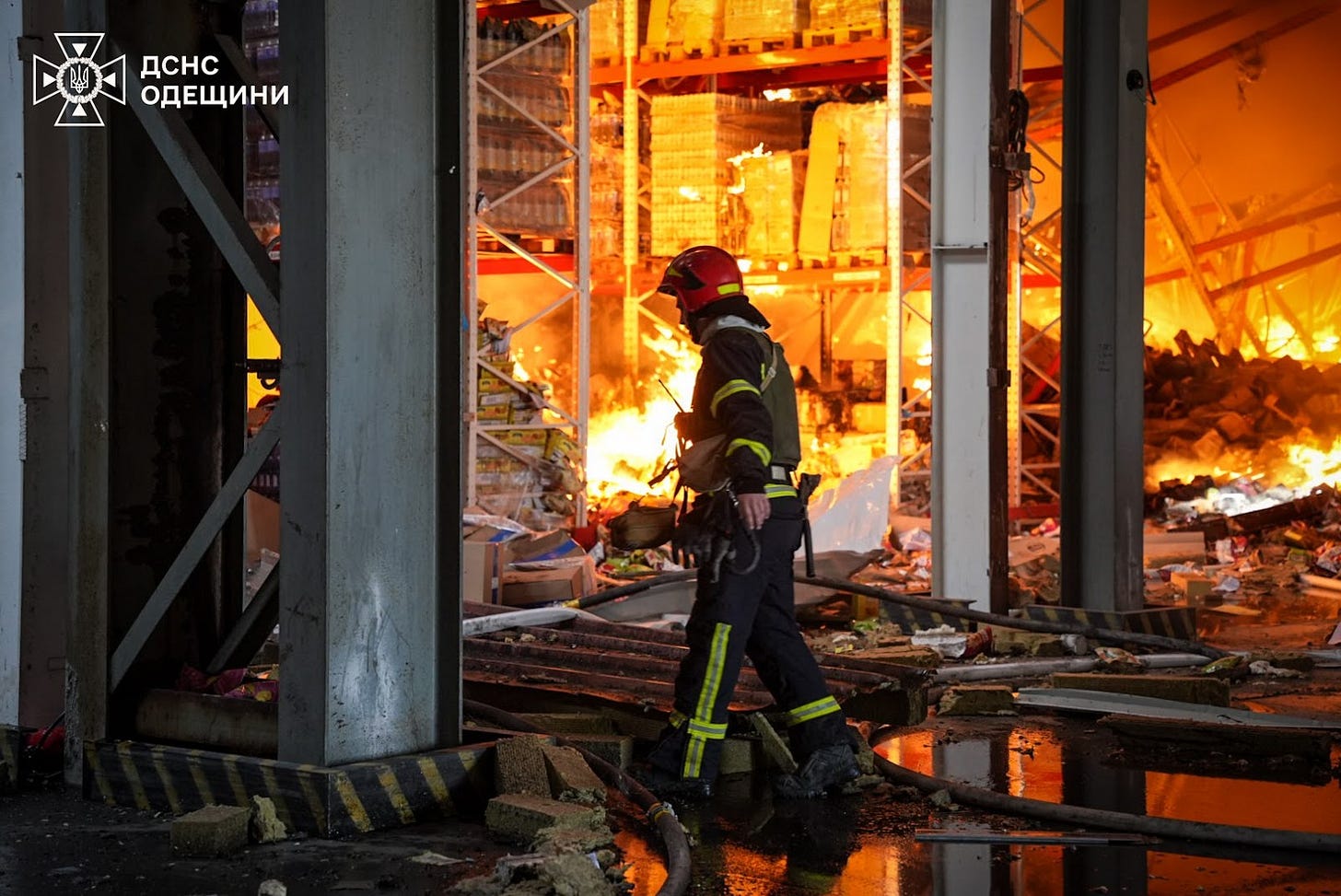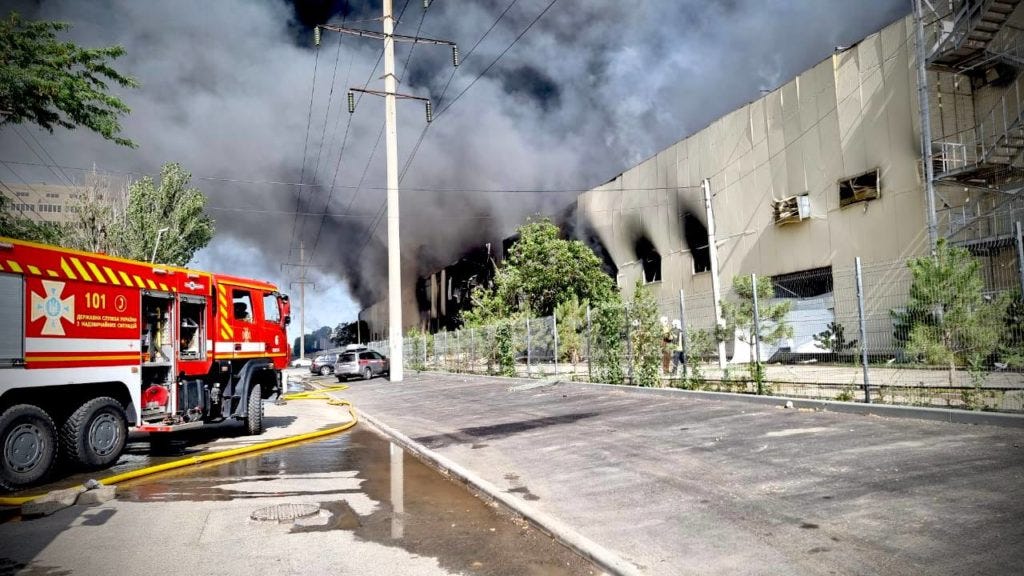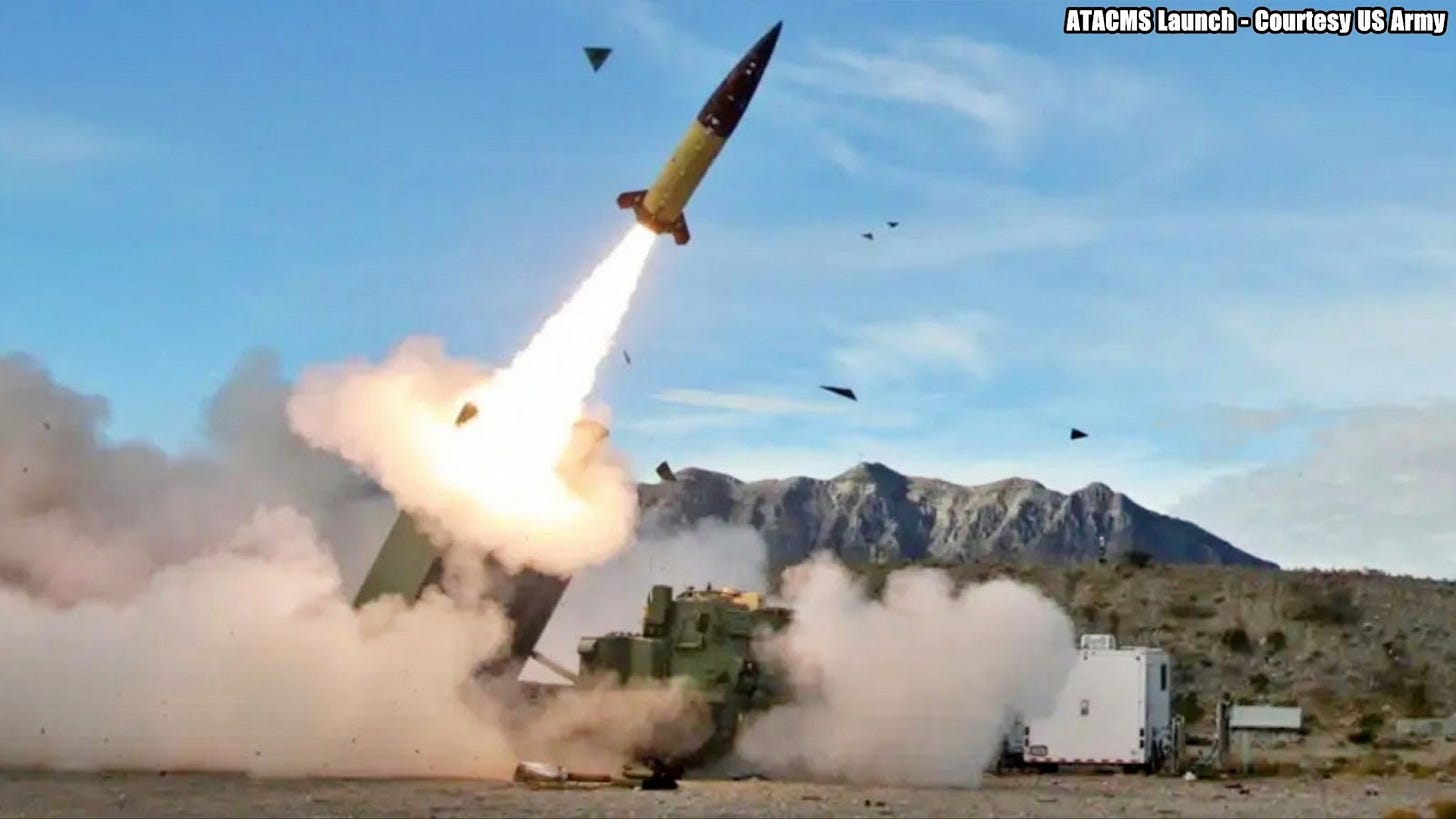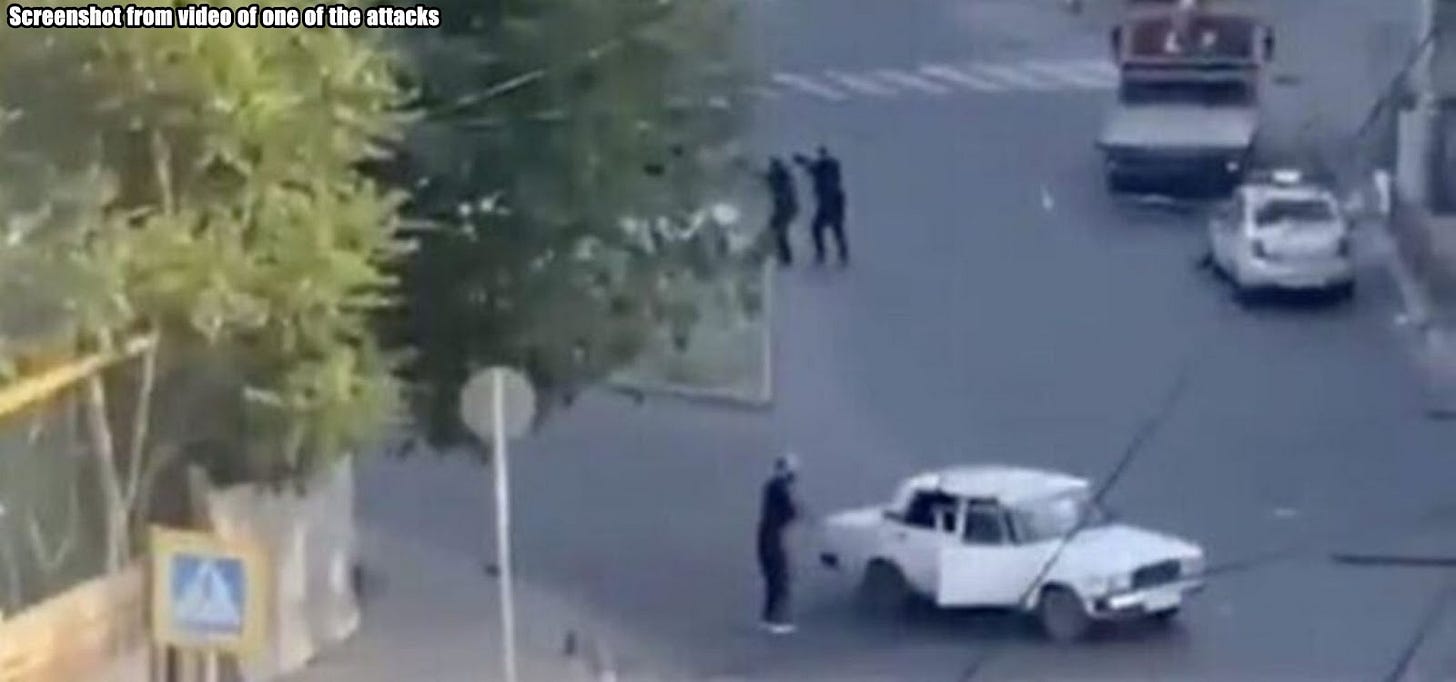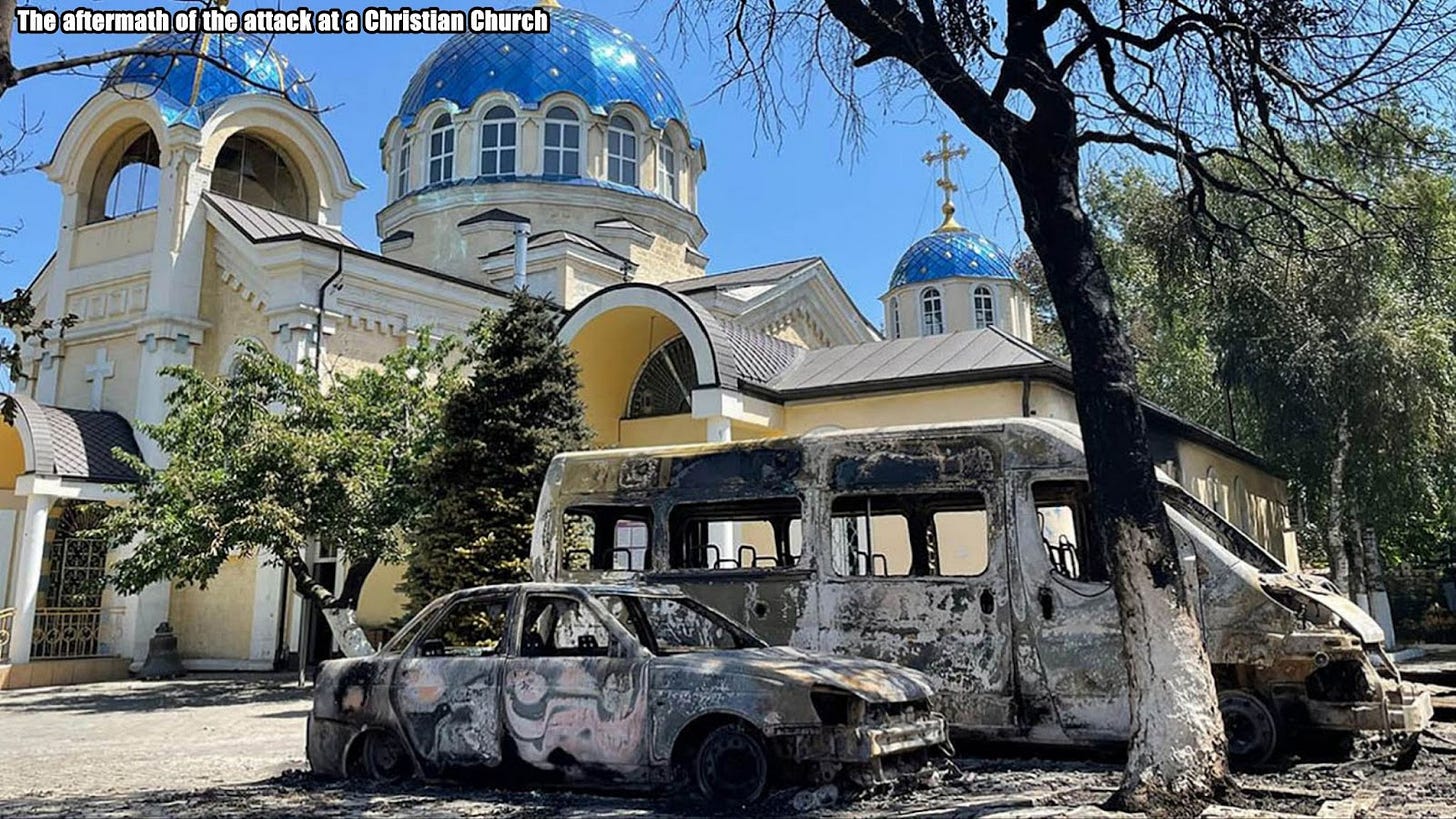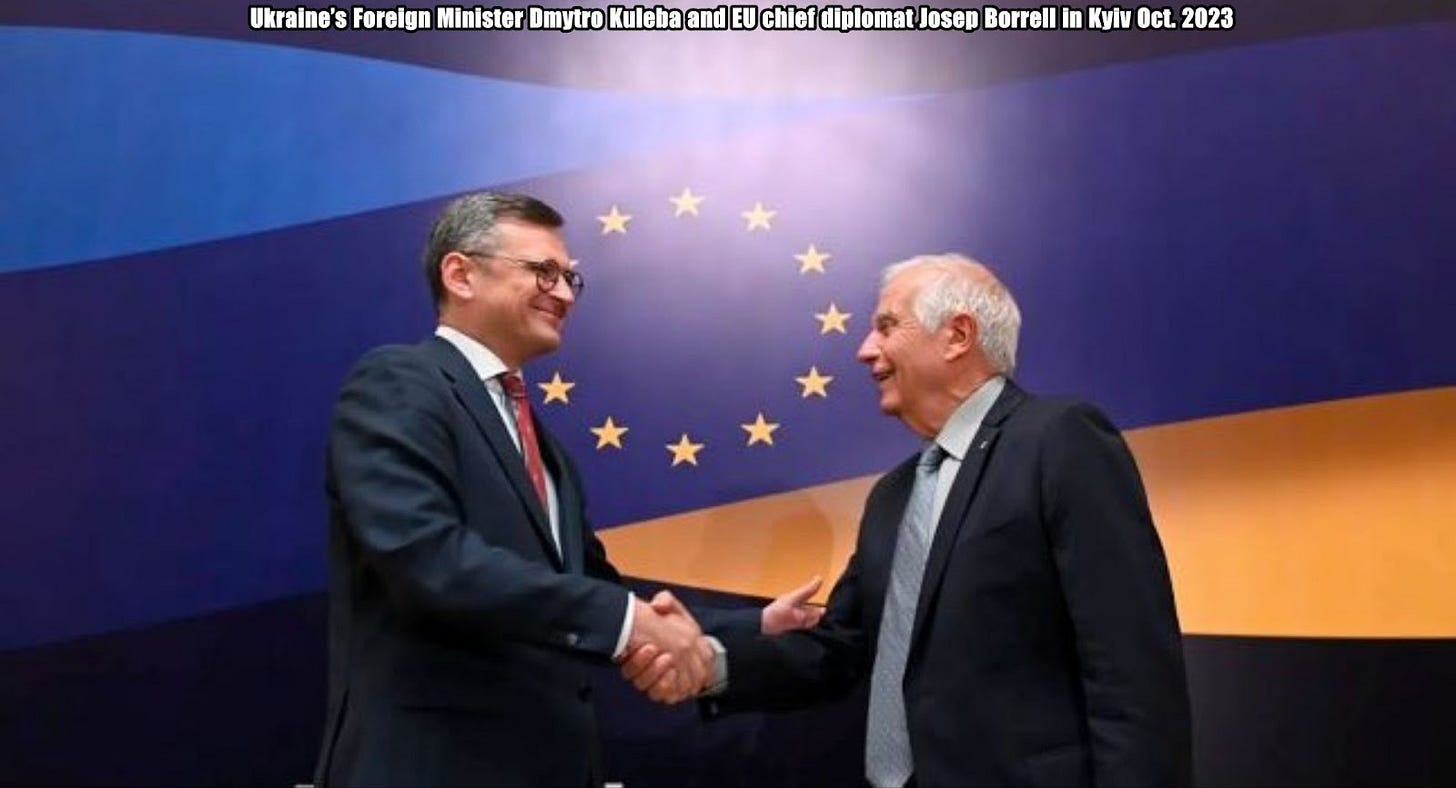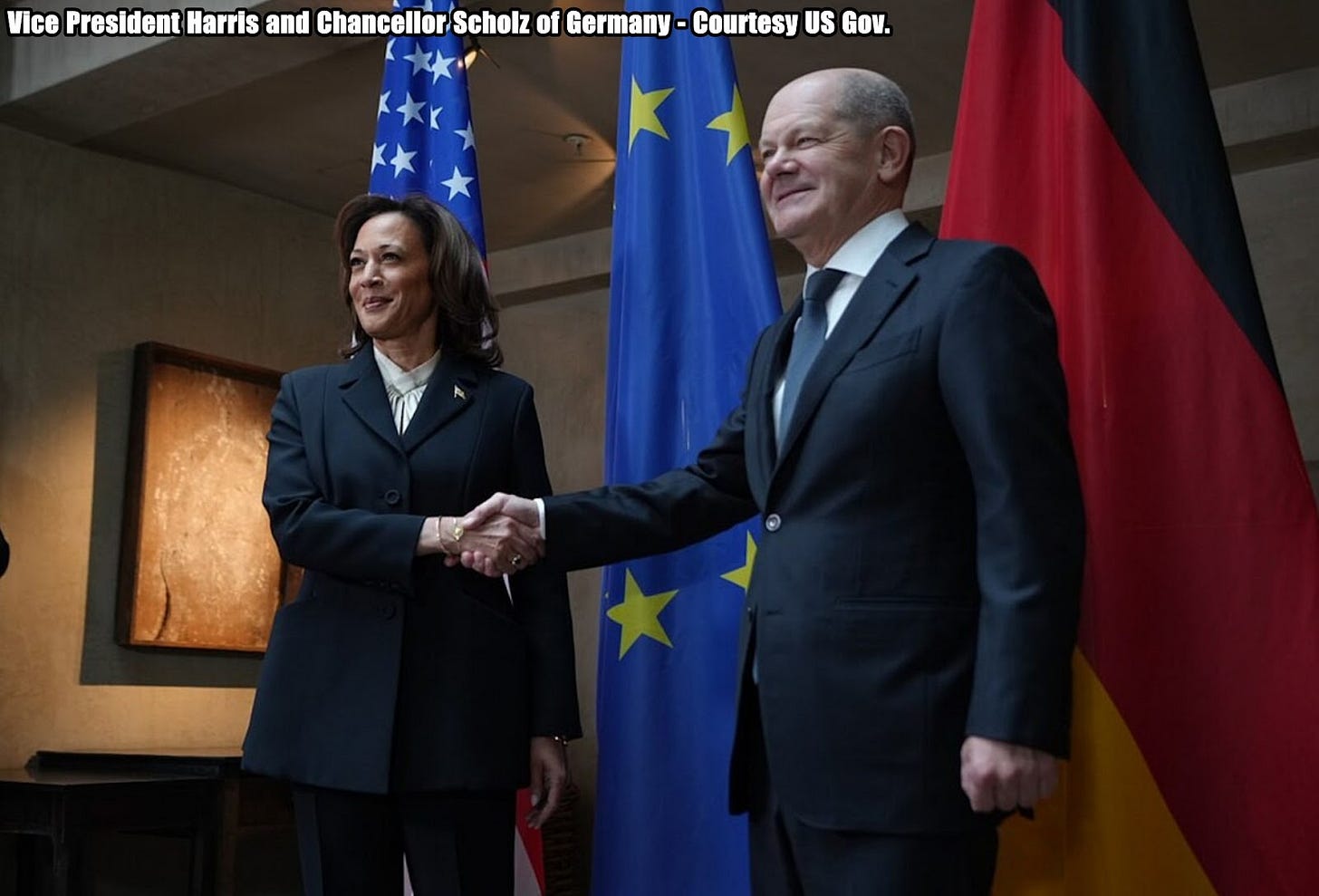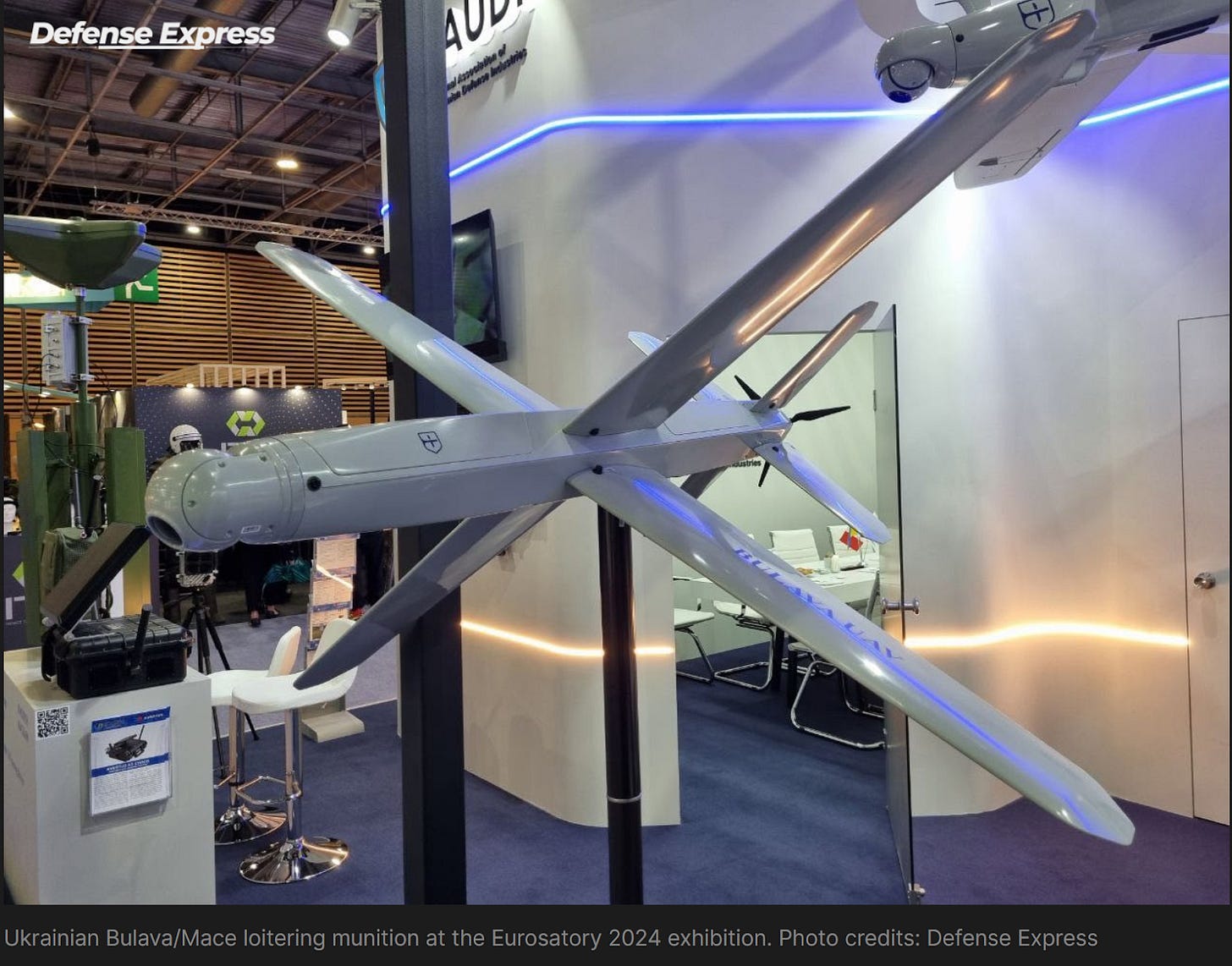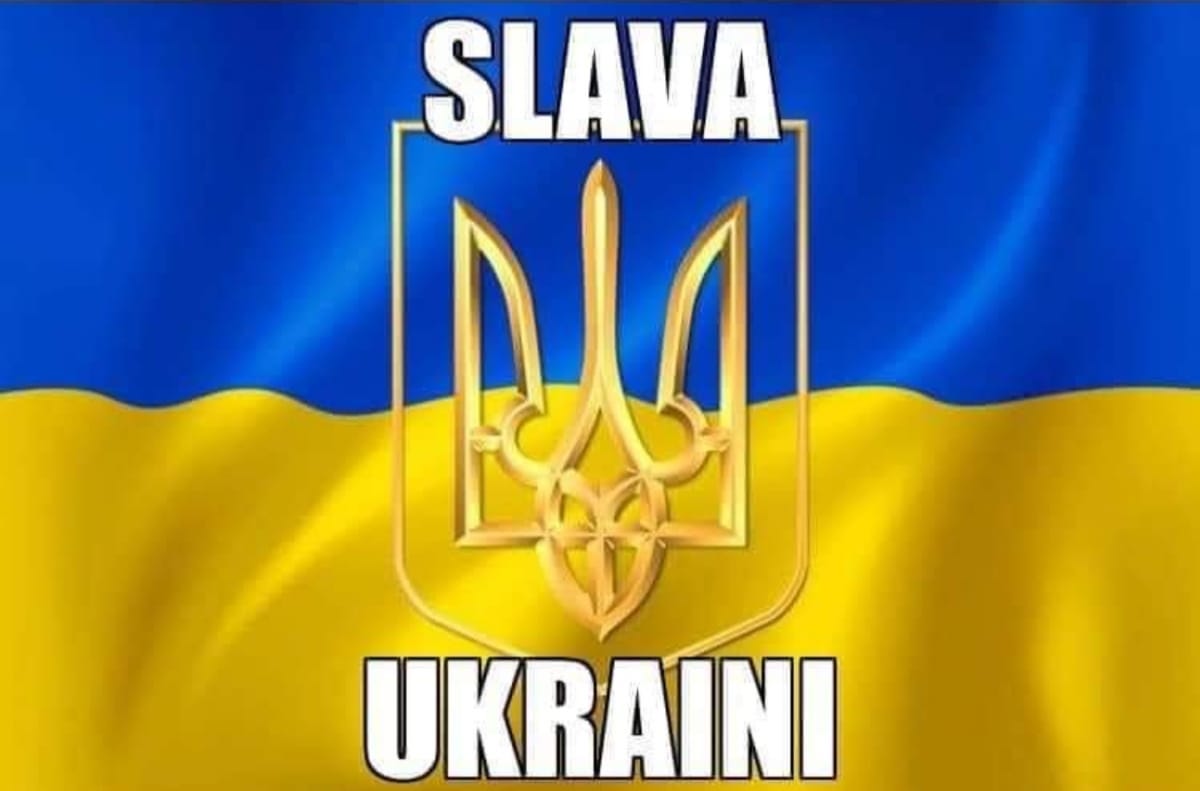Slava Ukraini! In early 2022 I began a Telegram channel aggregating news from a number of sources daily on the war in Ukraine. Since June 2023 I have provided a daily draft for the Ukraine War Brief Podcast collecting news from over 60 sources daily, much of which forms the basis of the script. While the Podcast is on hiatus I will make this Draft available here both on my own Substack and The People’s Media for those who wish to keep up with events on a daily basis.
ALONG THE CONTACT LINE
GSAFU Morning Report
The General Staff of the Armed Forces of Ukraine in its Operational Information update at 22:00 on June 23 stated that day 852 of the full-scale invasion of the Russian Federation against Ukraine was about to begin.
During the past day, 116 combat engagements took place. Over the past 24 hours, the enemy carried out 2 missile strikes, 47 air strikes, 444 drone strikes and 3,227 artillery strikes across the positions of Ukrainian forces.
At the same time, Ukrainian soldiers continue to inflict losses in manpower and equipment on the occupying troops, exhausting the enemy along the entire front line and continue to disrupt the plans of Russian occupiers to advance deep into the territory of Ukraine.
Air Force Daily Report
On the morning of June 24, 2024, the Russian invaders attacked Odesa with two cruise missiles, probably "Iskander-K". Due to the active countermeasures of the air defence of southern Ukraine, one of the missiles did not reach its target.
At dawn, the enemy carried out airstrikes with the use of air defence systems in the Kherson region.
Over the past day, on June 23, 2024, the reconnaissance drone "ZALA" was destroyed in the Mykolaiv region.
The Khortytsia operational-strategic group
(Responsible for the northeastern part of Ukraine. )
Kharkiv axis: The enemy, supported by aviation, 4 times unsuccessfully attacked in the area of Vovchansk and a third attack is ongoing.
Kupyansk axis: The enemy unsuccessfully attacked Ukrainian positions 9 times in the vicinity of Pischane and Stelmakhivka.
Lyman axis: The enemy attacked Ukrainian positions 8 times in the vicinity of Makiivka and the Serebryanskyy Forest
Siversk axis: The enemy carried out several attacks in the vicinity of Vyimka and Rozdolivka. The situation has not changed significantly.
Kramatorsk axis: The situation has not experienced significant changes.
Toretsk axis: The enemy attacked Ukrainian positions 7 times on this front. All were repelled
The Tavria operational-strategic group
(Responsible for the central-eastern and southeastern part of Ukraine.)
Pokrovsk axis: Pokrovsk axis: This continues to be the most severe area of attack.The enemy conducted 44 attacks against Ukrainian defences in this area over the last day. More than half of the attacks the enemy spent from the district of Ocheretyne. Our troops are taking measures to stabilise the situation and prevent Russians from advancing.
Ukrainian military denies report on loss of Novooleksandrivka in Donetsk Oblast
On 23 June, the Ukrainian OSINT map project DeepState reported that Russian troops have taken control of Novooleksandrivka in Donetsk Oblast, near Ocheretyne, with Russian forces allegedly trying to secure the western outskirts of the village, with Ukrainian Defense Forces countering to prevent their advance.
Shortly later, the General Staff of the Ukrainian Armed Forces mentioned in its evening bulletin that the fighting continued in Novooleksandrivka Village, with Ukrainian troops taking measures “to stabilise the situation and prevent Russians from advancing deeper into Ukrainian territory.”
This morning, the Ukrainian Army’s 110th Brigade and General Staff refuted the DeepState’s report:
“The DeepState [web] resource published information about the alleged complete occupation of Novooleksandrivka in the Pokrovsk sector by the enemy. […] This information about the full occupation of Novooleksandrivka by the enemy is not true,” the 100th Separate Mechanised Brigade reported on Facebook.
According to Ukraine’s 110th Brigade, Russian forces occupy significant parts of Novooleksandrivka but do not control the entire settlement. Intense fighting continues as the brigade, supported by adjacent units, resists the enemy and keeps breached areas under fire control, maintaining the situation is under their control.
Kurakhove axis: The situation has not experienced significant changes.
Vremika axis: Several enemy assaults were defeated in the area of Staromaiorske and Urozhaine. The situation is controlled by the Defense Forces of Ukraine.
Orikhiv axis: The situation has not experienced significant changes.
The Odesa operational-strategic group
(Responsible for Kherson, Qırım, (also known as Crimea) and the Black Sea.)
Prydniprovsk axis: The situation has not experienced significant changes.
TEMPORARILY OCCUPIED TERRITORIES
Russia stations military targets near civilian areas in Qirim to deter Ukrainian strikes
The Institute for the Study of War (ISW) in its June 23 Russian Offensive Campaign Assessment stated that The Russian MoD claimed on June 23 that Ukrainian forces launched five ATACMS missiles armed with cluster munitions against Sevastopol and that Russian forces intercepted four missiles. The Russian MoD claimed that the impact from a Russian air defence interceptor caused one missile to deviate from its flight path and detonate.
The Russian MoD later blamed the United States for civilian casualties in Sevastopol given that the ATACMS are a US-provided system, despite acknowledging that a Russian air defence interceptor caused the missile to deviate from its flight path and detonate. A Crimea-focused Russian milblogger posted footage on the night of June 23 purportedly showing explosions near Yevpatoria and Vityne and claimed that there were explosions near Chornomorske and Mizhvodne.
Footage published on June 23 purportedly shows civilians on a beach in Sevastopol during and after the missile strike deviated.Russian sources claimed that cluster munitions landed on civilians near a beach in Uchuyevka Park in northern Sevastopol.
Ukrainian military officials did not confirm or deny launching strikes against Sevastopol. Ukrainian Mariupol Mayoral Advisor Petro Andryushchenko stated that Ukraine needs to obtain special permission to use ATACMS with cluster munitions from Western partners and claimed that the Russian occupation government is at fault for civilian casualties because it had failed to warn civilians before Russian air defence systems shot down unspecified missiles over their heads.
ISW cannot independently verify if Ukrainian forces used ATACMS missiles armed with cluster munitions. The Russian MoD's blaming of the United States for civilian casualties is an attempt to deter the United States from providing further security assistance to Ukraine.
THE HOME FRONT
Four injured as Russian missile hits retail warehouse in Odesa
On the morning of 24 June, Russian forces launched an attack on Odesa Oblast using two Iskander-K cruise missiles. The air defense systems in southern Ukraine successfully intercepted one of the missiles, preventing it from reaching its target, according to Ukraine’s Air Force Command. The second missile struck a warehouse belonging to the Tavria V supermarket chain, injuring four people. Euromaidan Press reports.
Odesa is a frequent target for Russian missile and drone strikes. Back in June 2023, the Russians targeted the same chain’s warehouse, resulting in the deaths of three employees.
Oleh Kiper, head of the Odesa Regional Military Administration, provided details on today’s casualties. He stated.
Photos courtesy State Emergency Services
-
Zelenskyy announced new agreements on air defence systems
The President of Ukraine Volodymyr Zelenskyy has announced, in his June 23 evening address, new agreements on the supply of additional air defence systems for Ukraine.
“The next weeks of June, the first half of July should be no less productive for Ukraine than May, than the first half of June. We have already received a decision on new Patriots for Ukraine and we are preparing a continuation. We are working on the delivery of more air defence systems,” the president of Ukraine said in his evening address.
He noted that long-range capability now is not only a question of what Ukraine can achieve on the battlefield, but also of when the war will end altogether.
“The more we can, the faster we will be able to force the Russian Federation to a just peace,” Zelenskyy stated.
Zelenskyy has called the Patriot air defence system “the most effective air defence system in the world today”, and said they were capable of shooting down all Russian missiles, including ballistic ones.
RUSSIAN WORLD
U.S.-supplied weapons show impact inside Russia, Ukrainian soldiers hope for deeper strikes
Weeks after the decision allowing Ukraine to use U.S.-supplied weapons for limited strikes in Russian territory, the country is having some success in halting Russia’s new push along the northeast front, but military commanders are clamouring for restrictions on long-range missiles to be lifted. AP reported.
Deteriorating battlefield conditions forced the U.S. to permit Ukraine to use Western-supplied artillery and rocket systems to defend the eastern city of Kharkiv by targeting border regions where the Kremlin’s forces assemble and launch attacks. The impact was swift: Ukrainian forces pushed Russian positions back, won time to better fortify their own positions and even mounted small offensive actions.
But commanders said that without the ability to use long-range guided missiles, such as ATACMS, their hands are tied.
“We could target (Russian) brigade command points and the entire northern grouping, because they are located 100 to 150 kilometres from the front line,” said Hefastus, an artillery commander in the Kharkiv region who goes by his callsign. “Normal ammunition can’t get at them. With this kind, we can do a lot to destroy their centres of command.”
Terrorism strikes home again in Russian Federation
The Institute for the Study of War (ISW) in its June 23 Russian Offensive Campaign Assessment reported that The Islamic State (IS) Northern Caucasus branch, Wilayat Kavkaz, likely conducted a complex and coordinated attack against churches, synagogues, and law enforcement structures in the Republic of Dagestan on June 23.
Dagestan's Ministry of Internal Affairs reported that unknown actors opened fire on a Russian Orthodox church and a synagogue in Derbent at approximately 1800 local time and then reported within the same hour that another group of unknown actors opened fire on a traffic police post in Makhachkala (120 kilometres north of Derbent).
There are also reports of a fire at a synagogue in Makhachkala, although Russian official sources have not confirmed a second synagogue attack.Dagestan announced a counter-terrorism regime following the start of the attacks, and Russian law enforcement killed five of the assailants and wounded six. Social media footage shows Russian law enforcement detaining two suspects on a public beach in Makhachkala after they seemingly fled the scene of the shooting.
Russian media reported that seven law enforcement officials, a priest, and a church guard died in the attacks and 25 more individuals have been injured. The Russian National Anti-Terrorism Committee announced the end of the counterterrorism operation in Derbent after the deaths of two suspects but small arms fire exchanges continued in Makhachkala as of 2300 local time on June 23.
The Baza Telegram channel claimed that two of the Makhachkala attackers identified as Osman and Adil Omarov, both of whom Russian law enforcement killed, were the sons of Sergokalinsky district head Magomed Omarov.
Russian Telegram channels are circulating footage reportedly filmed by Osman Omarov of the Makhachkala synagogue attack. Baza reported that Russian law enforcement has also detained Magomed Omarov and are searching his home. Russian news agency Interfax claimed that Omarov's nephew also took part in the attack and Russian law enforcement killed him.
NEWS WORLDWIDE
EU devises legal loophole to bypass Hungary veto on support for Ukraine
The EU has devised a legal workaround to sidestep Hungary’s veto on buying weapons for Ukraine with the profits generated by Russia’s frozen assets this year, in a move that could also clear the way for the G7 to pay $50bn to Kyiv. The Financial Times reports.
EU chief diplomat Josep Borrell told the Financial Times that since Hungary abstained from an earlier agreement to set aside the proceeds from Russia’s frozen assets, it “should not be part of the decision to use this money”. He added that the workaround was “sophisticated as every legal decision, but it flies”.
Bypassing Budapest this way could also remove a hurdle that could complicate G7 efforts to raise a $50bn loan for Kyiv by December — designed to be paid off by the future proceeds — a decision taken by leaders at a summit in Italy earlier this month.
Hungary, the EU’s most pro-Russian member state, has long argued against the 27-country bloc collectively providing military support to Ukraine. Budapest is also blocking seven other decisions related to arming Kyiv, worth about €6.6bn.
Germany’s Scholz claims his party's support for Ukraine is connected to its declining popularity
The decreasing popularity of Germany's Social Democratic Party (SDP), headed by Chancellor Olaf Scholz, is connected to some voters' opposition to the party's support for Ukraine, Scholz said in an interview with Tagesschau published on June 24. The Kyiv Independent writes.
The effect is most directly felt in some states in Germany's east, where SDP is only polling at 7% ahead of upcoming local elections scheduled for September.
SDP suffered a bruising loss in the elections for the European Parliament earlier in June, coming in third place, behind the centre-right Conservative Christian Union-Christian Social Union (CDU/CSU) and far-right Alternative for Germany (AfD).
At the same time, there is "no alternative to changing (the government's policy toward Ukraine)."
Scholz said he is hopeful that the upcoming elections would not result in an AfD prime minister being elected, which he said would be "very depressing." Nonetheless, he acknowledged that AfD would likely play a role in the forthcoming governing coalition.
Recent polls have also indicated signs of nationwide scepticism toward Germany's support for Ukraine, with 58% of respondents saying in March that they opposed the provision of long-range Taurus missiles. Another 31% said they were not in favour of delivering any German-made weapons to Ukraine.
MILITARY & TECH
Ukraine shows new loitering “Bulava” drone at Eurosatory exhibition 2024 in Paris
Ukraine unveiled a new “Bulava” kamikaze drone at the Eurosatory 2024 international exhibition in Paris. Defence Express said the Bulava is an analogue to a Russian “Lancet” unmanned aerial vehicle. Euromaidan Press reports.
UAC, the Ukrainian-Czech company, showed the drone, also known as a Mace loitering munition, at the National Association of Defense Industry Enterprises of Ukraine panel.
According to its specifications, an X-shaped kamikaze drone has a powerful combined 3.6 kg heat-thermobaric warhead and can hit targets at a distance of up to 60 kilometres.
A drone can stay in the air for more than 50 minutes at a 100 km/h speed and is equipped with an electric engine. The wingspan is about 1.6 metres, while the fuselage length is about 1.5 metres. Bulava weighs 11 kg and has a maximum flight altitude of 2000 metres.
A drone can be piloted directly by an operator or via satellite coordinates. It features a communication module with an encrypted channel and a CRPA antenna resistant to electronic warfare interference.
The “Bulava” boasts high manoeuvrability due to its X-shaped tail and can strike targets in the least protected upper hemisphere.
Targeting is carried out through an optical station with day and night thermal imaging channels. The developers said that targeting can be done directly by an operator or a machine vision-based system.
That’s it for today’s Draft folks if you would like to keep up with events in Ukraine daily please consider subscribing, its free!
Feel free to share this update with your friends. Heroyam Slava!







